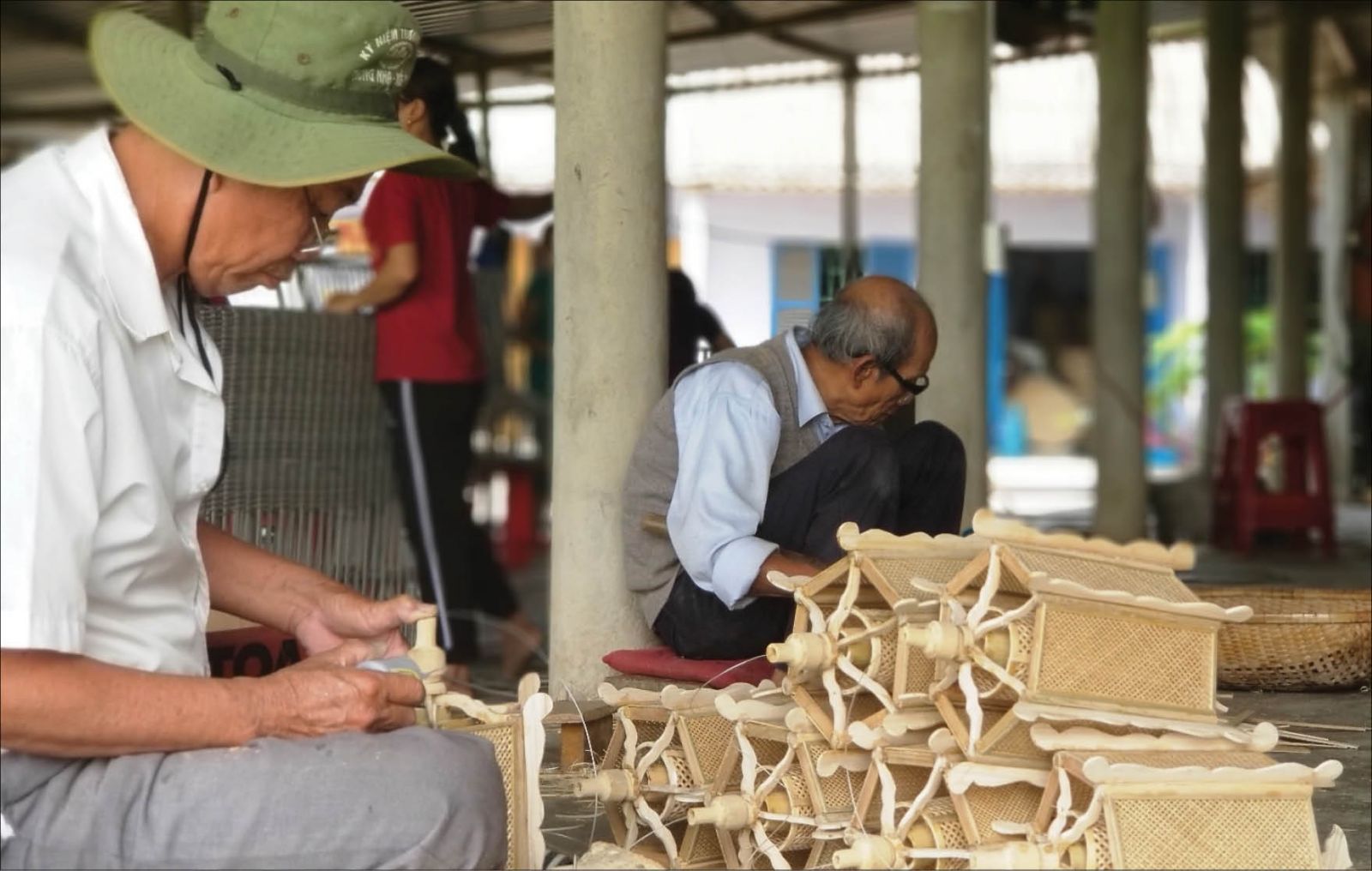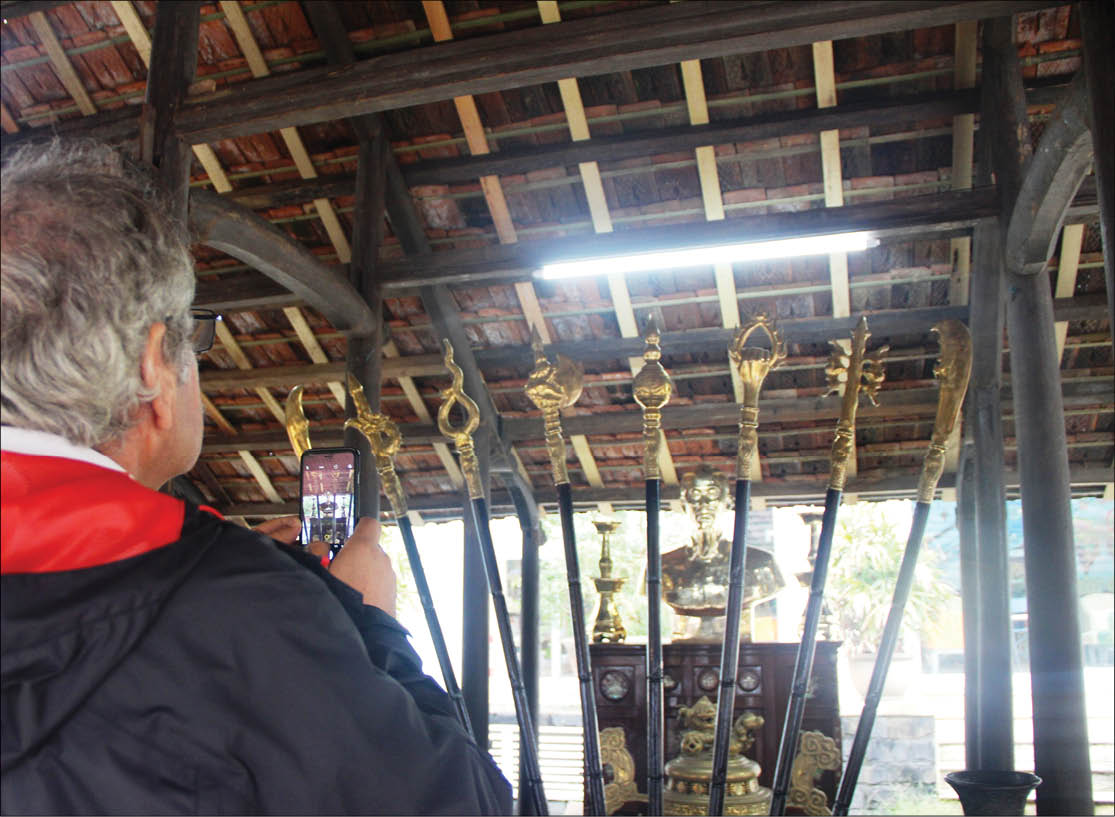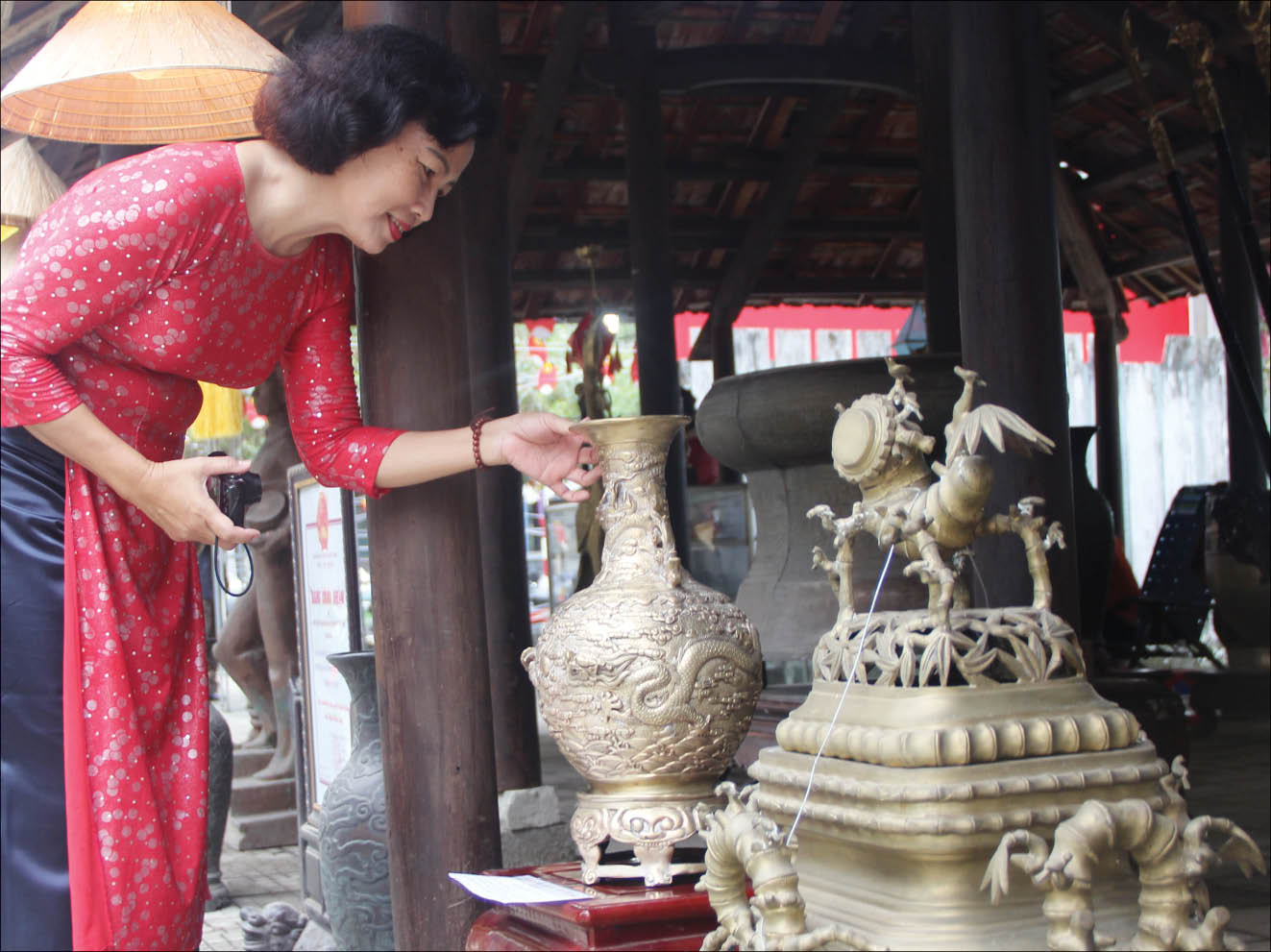
Artisans in Bao La Bamboo Weaving Village are still working diligently to create new designs
1. Bao La bamboo baskets are to contain flour/ Mats from Binh Dinh are very good, do you know? ...,” is the folk song that everyone has known by heart for thousands of generations.
Mr. Vo Van Dinh, Director of Bao La Bamboo Weaving Cooperative, says proudly that no one can make better products of bamboo than local people. With their own secrets, people in the village have so far made a living out of it. Baskets of different designs and at various prices made by Bao La are now sold in Quang Tri, Quang Binh, Ha Noi, and also to China.
Mr. Dinh has a good reason to be proud because Bao La is listed among the very few craft villages that know how to change themselves to suit the reality and are accepted by the market. They not only produce their conventional hand-made products, but also improve them and create unique souvenirs.
Explaining for the success of Bao La Bamboo Weaving Village, Mr. Dinh quoted “talent” when being asked about how the village can survive while many other places are producing the same things too, and that their products might be easily “copied” in the process of exportation.

Tourists are very excited with products by the bronze casting village
Mr. Dinh’s word “talent” does not confine to the 5 or 6 steps to make a single product, from preparing materials to sharpening and weaving, but also contains the ability to learn to create new products that are not conventional.
“They are all hard-working farmers. When they have free time, they go online watching new objects, then try to reproduce them of bamboo. By doing so, every year, they always have new products for the market. Many people often ask me about the different character of products made by Bao La and how to avoid being copied. I think it is because of the people. Every job has its secrets. Bamboo weaving looks simple at first glance, but villagers in Bao La have their own techniques, which people elsewhere do not. Our products sell well on the market thanks to that,” says Mr. Dinh.
This traditional craft has been not only the way to earn a living for people for many centuries, but also to reflect the communal culture of the inhabitants. Many crafts have been surviving until now, but over time, some are fading and facing the risk of disappearing for good if they do not change themselves.
Once I “strayed” into a clan ancestral house and saw a very beautiful bronze incense burner, one of the three items of a set of three-worship-objects. It was made in Phuong Duc (Hue City,) where there is a famous bronze casting village.

Unique products by the bronze casting village in Phuong Duc (Hue City) attract many tourists
Maybe the headman did not know that incense burner is just one among myriads of sophisticated products made by this bronze casting village. Many products have become standards and even set records such as the statue of Tran Hung Dao at Vi Hoang Park (Nam Dinh City), the statue of Tathagata at Kim Thanh Pagoda (Gia Lai), or the Great Bell at Bai Dinh Pagoda, considered the biggest bronze bell in Southeast Asia.
Mr. Nguyen Phung Son, a descendant of Nguyen Van Sinh the artisan, says making big bells and big statues have once been typical of Hue artisans. But craft villages now live on the demand of the market. The fact that more and bigger pagodas and temples are being built creates work for bronze casters. They also make souvenirs as well to diversify their products.
Before returning to Hue, Mr. Son had been working out of province for nearly 20 years. More than anyone else, he knows what he should do to survive. “Market studies and competition,” says Mr. Son. “It’s the difference between business now and in the past.”
“Bronze casting in Hue has been well known for a long time, but it is also developing in other places now. Some places even make bigger bells and statues. However, Hue people have their own way to mix metals and their techniques are also more sophisticated, that gives their products a stable status,” says Mr. Son.
2. Bronze casting and bamboo weaving are just two beautiful notes of the symphony by hundreds of craft villages in Hue.
The Traditional Craft Village Festival is coming. It is not only a festival for traditional craft villages in the province, but also where artisans and workers from all over the country meet to admire, promote their products, and learn from one another.
In festivals, the artisans such as Nguyen Van Sinh and Nguyen Phung Son remind people of the sounds of the bells they make; seeing Tran Duy Mong, people can figure out his sophisticated jewelry; or talking to Le Van Kinh, they see Hue landscapes on his embroidery pictures.
In order to revive and conserve traditional crafts, besides the foundation, we need people with talent and hearts. At this point, I suddenly think of Hai Nhuan Fish Sauce Village (Phong Hai Commune, Phong Dien District,) which has just been recognized by the Provincial People's Committee. Maybe this big festival is a chance for it to promote its products. But the important thing is how to maintain and develop its craft among similar things. Traditional fish sauce is not just the combination of fish and salt in the 3:1 ratio, but it also depends on people and the market, and on how to maintain a stable status.
Each career or craft village has its own historical and cultural values. Reviving and developing craft villages have been identified as a priority for tourism for many years. However, among nearly one hundred traditional craft villages with about 30 traditional handicraft villages, just a few villages are working well.
Anyone who passes by the ancient village of Phuoc Tich (Phong Hoa Commune, Phong Dien District) will feel sorry for the craft of making pottery because it just appears when there are festivals. Artisans here are concerned about the next generation, who will keep the career. Besides some ancient houses and the practice service teaching people how to make pottery, visitors have nothing else to be impressed with. Pottery is on display in festivals, but when the festivals are over, the kiln cools off. People are now not very interested because pottery does not bring back many benefits.
Visiting the craft villages, I felt worried for the traditional craft villages which are just the names. Whether or not we can revive craft villages is not an easy question to answer.
Story and photos: Quynh Vien